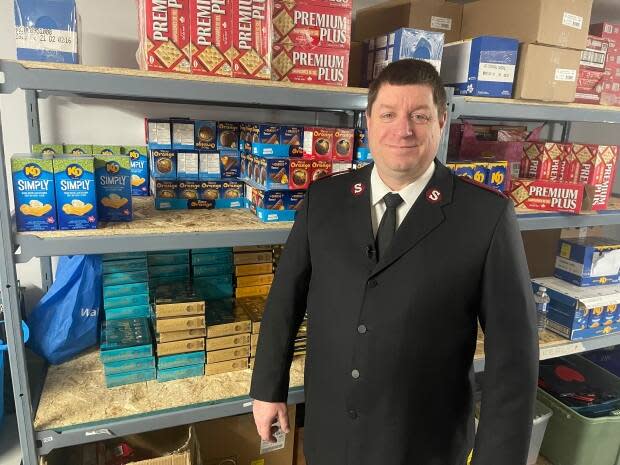Fewer donations, ever-growing demand: Northern food banks struggle to keep up

Food bank use continues to rise across Canada, and the North has seen some of the most dramatic change in recent years.
According to Food Banks Canada's 2022 "HungerCount" report, food bank visits in the territories shot up by about 36 per cent between 2021 and 2022. That's compared to a two per cent increase in visits over the two previous years.
"We were heading into the pandemic, into the cost-of-living crisis, with what I would call crisis-level food insecurity rates in the territories already," said Kirstin Beardsley, the CEO of Food Banks Canada.
"That's only been exacerbated ... it's harder to get food into the North, the price of food is higher anyways, and so people are already stretched. And so it's almost like the challenges we see in southern Canada are even harder in the far North."
Beardsley said food bank usage across Canada is now higher than it's ever been.
"Anyone who was close to the edge has now been pushed over," she said.
Lieut. Jason Brinson, executive director of The Salvation Army Yellowknife which runs a local food bank, has definitely noticed that more people are feeling the pinch of inflation and higher food prices.
"It's really tough for people," he said.

"We are definitely concerned about what the future looks like if things don't change."
Brinson said along with more demand, his food bank is seeing fewer donations. He chalks it all up to the same thing — the ever-rising cost of food.
In the past Brinson said his facility might spend a few thousand dollars each year to supplement their food donations. Now, it's already spent well over $100,000 so far this fiscal year.
It's "very shocking," he said.
'At least I know I'm gonna have something to eat tonight'
At the Yellowknife Women's Centre, Martha Karoo has dropped by to pick up a food hamper. Her part-time job doesn't bring in enough money to buy all the food she needs.
"I feel so good. At least I know I'm gonna have something to eat tonight and tomorrow and the next day," she said.

Still, she doesn't take all she needs. Karoo picks up no more than one hamper per month because she wants to ensure that people with larger families get what they need.
The centre prepares hampers on Fridays with whatever food donations they've received from Food Rescue Yellowknife.
Jennie Smith, who helps out at the centre, says it's never enough these days. Sometimes people show up early and they're told to come back.
"We can only do so much, and it's first-come first-serve, so I feel kinda bad when we don't have no more. Like, it's hard to say no," Smith said.

"For the past month and a half here, we barely got bread, we barely get meats — just because the cost is up so high now ... Before that, we used to get tons of meat, like cases and cases of bread, and now it's just, we barely get anything."
Beardsley is not sure what the solution is for food banks and other organizations struggling to meet the ever-growing need. But she says they can "only be called on to do so much."
"I think the solution here really is about seeing fewer people needing the food bank in the first place," she said, "which really is about ensuring that people have access to income that they need."


